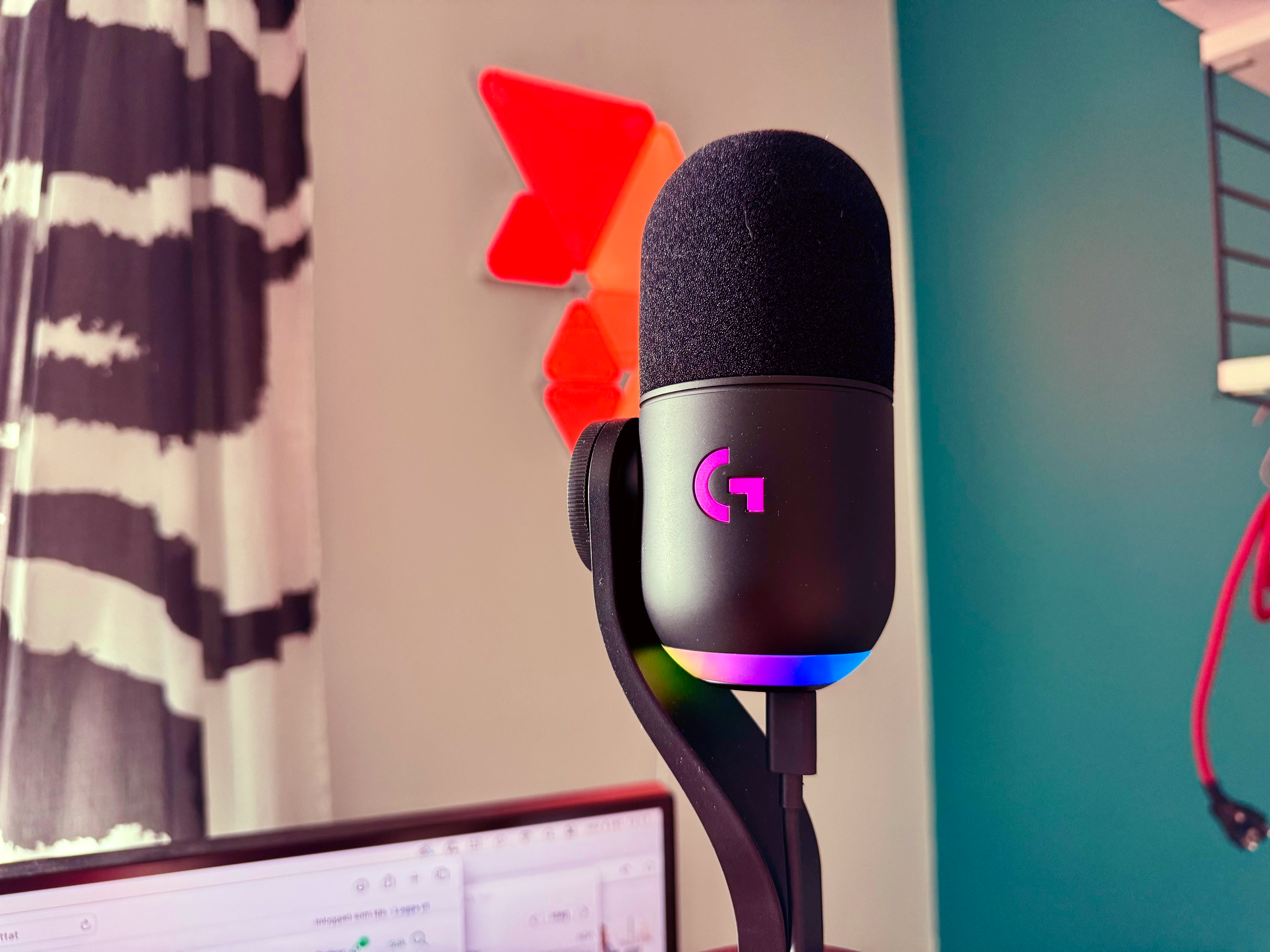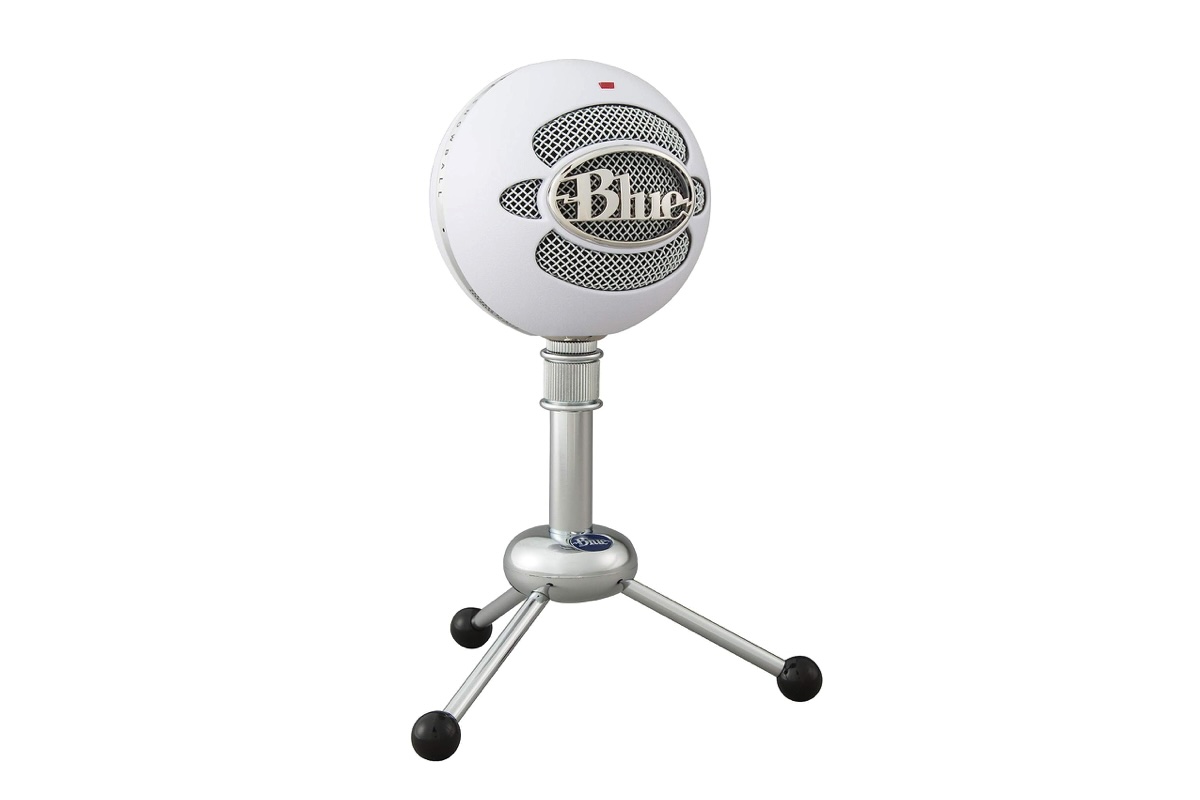While every Mac and iPhone comes with a microphone built-in, they’re not ones that deliver high quality audio. So, if you want to sound your best on video calls, are thinking of starting a podcast, becoming a YouTube or TikTok star, streaming on Twitch, or want to record some music at home, you should definitely get yourself a good external microphone.
But, with so many on the market, which ones are best for your needs? What’s the difference between USB and XLR, condenser or dynamic? It can all be a bit confusing. Not to worry though, as we’ve put together a roundup of the best microphones for different situations, with all of them retailing for less than $250/£200.
Should I buy a USB or XLR microphone?
When it comes to microphones, there are two main types of connection that you use to plug them into your Mac: USB and XLR. The former is the easiest as they connect via a standard USB cable, while the XLR variant can’t be attached directly to a Mac, but instead requires some kind of audio interface.
You might think that this makes the USB option the best, and for many people this will be the case, but audiophiles usually take the view that the XLR/audio interface route gives superior audio quality thanks to the pre-amps in the interface that can add a little warmth and sparkle to the finished recordings.
If you just want a simple setup that gives good results, then a USB microphone will probably suffice as it will most likely be a cheaper and more portable solution. For those wanting to record music or multiple people in a podcast the flexibility and more professional options that come with the XLR/audio interface setup will be preferential.
While we won’t be covering audio interfaces in this particular roundup, an excellent choice is anything from the Focusrite Scarlett range, with the Scarlett Solo (4th gen) perfect for those just starting out with audio recording. It retails for around $159.99/£139.99 and at the time of writing could be found for $139.99 on Amazon US or £127.98 on Amazon UK. You can probably find the 3rd-generation models even cheaper if you shop around, and they are still excellent devices for connecting microphones to your Mac.
Should I buy a dynamic or condenser microphone?
Aside from the connection choice, there’s also the type of microphone you can buy. There, again, are two main options: dynamic and condenser.
As a rule of thumb dynamic mics are better are getting rid of background noise as they have a focus on what’s directly in front of the microphone (your voice). Condensers can have a richer tonal palette, but their sensitivity can pick up more surrounding audio. The latter makes them excellent for capturing ambient tones in the room, but if you live in a noisy house then they could be problematic.
Both can produce fantastic audio, so if you’re unsure which to choose, do a little Googling on the specific model you have in mind to see if people who own them are getting the results you’re hoping to attain.
Top microphones for Mac
Logitech Yeti
Pros
- Multiple cardioid patterns
- Plug-and-play
- Solid construction
Cons
- Needs a pop shield (sold separately)
- Quite bulky
Price When Reviewed:
$129.99
Type: Condenser / USB
A stalwart in the USB microphone world is the Yeti (from Blue, now owned by Logitech). You’ll see this in a multitude of YouTube videos and have heard it on countless Twitch streams and podcasts, as it’s an incredibly popular condenser mic that delivers great audio.
One of the main reasons for its popularity is that it contains four different condenser capsules inside – giving it the ability to record in a variety of modes. These include speaking directly into the mic or even having two people speak on either side of it. The Yeti is a big unit though, so you’ll need a bit of deskspace to accommodate it.
If versatility is what you’re after, not to mention the convenience of a USB connection and built-in stand, then the Yeti is a tried and tested legend.
Logitech Yeti X
Pros
- Great customization
- Advanced gain settings
- LED indicators
Cons
- Large size
- Extendable arm as an accessory
Price When Reviewed:
From $169.99
Type: Condenser / USB
In addition to sporting a premium design that would not be out of place in a live broadcast, the Yeti X is a tremendously versatile complete kit. It’s an upgrade to the popular Yeti with improved audio quality and design updates.
It is made with a four-capsule condenser matrix and a variety of patterns that include microphones in cardioid, stereo and omnidirectional mode to handle any recording situation with ease.
It is true that it does not have the 1/4-inch audio input that the Samson G-Track Pro does have, but where the Blue Yeti X really stands out is in the software section. The VO software is directly integrated into Logitech G Hub.
This allows you not only to select a range of preset audio settings so that your voice sounds more tuned for a broadcast, but you can also modify advanced settings related to noise, compression and more.
Thanks to its LED indicator and variating potentiometer, it is possible to visualize and adjust the audio level of the voice at a glance and manage it instantly, without having to resort to the computer’s parameters.
With the Yeti X plugin for Mac and Windows computers, the Yeti X integrates with the macOS operating system to have greater control and customize the color of the LED lights and manage the gain of the microphone, pattern or volume selection, among other aspects.
Read our full
Logitech Yeti X review
Logitech G Yeti GX

Pros
- Stylish and well-built
- Plug in and go
- Install G Hub for lots of settings
Cons
- G Hub works like this on Mac
- The price
Price When Reviewed:
$149.99
The Logitech G Yeti GX has fancy RGB lighting–a G logo is illuminated and a matching LED ring adorns the bottom edge of the mic. It will no doubt look cool in a YouTube video.
The mic can be placed on a table or mounted on a boom arm. There’s a USB-C connector on the bottom, but unfortunately no 3.5mm aux plug to connect your headphones. If you want to hear yourself for, say, a podcast recording, you’ll have to resort to other means.
If you want to influence the sound you’ll need Logitech’s G Hub software, and unfortunately, the app is a mixed bag. On the Mac side they haven’t even managed to update the app for Apple’s own processors so it’s running via Rosetta. The app does work on a Mac though, and it’s easy to make adjustments to the sound to get it just right.
If you need a simple microphone with really good sound for videos, podcasts, video meetings, or whatever, this mic is worth checking out. The price is a bit high, but so is the quality.
Logitech Snowball iCE

Pros
- Affordable
- Plug-and-play
- Desktop design
Cons
- No pop-shield
- Limited angles on stand
Price When Reviewed:
$49.99
Type: Dynamic / USB & XLR
If you’re looking for a cheap and cheerful microphone to record vocals when streaming, video calling or making a podcast, then the Snowball iCE is a good option. Like the Yeti, the Snowball was one of Blue Microphones mics, but Logitech bought the company in 2017 rolling Blue’s Yeti, Yeti Pro, Yeti Nano, and Snowball mics into its own lineup.
The spherical chassis is cool and fun, plus it comes with an attachable stand that will have it sitting up on your desk at a good height to capture your voice.
You’ll want to add a pop shield if you intend to speak directly into it, as you’ll pick up ‘plosives’ (booming sounds as your breath hits the microphone) when using it in this manner. Sit it slightly offset to your mouth and you should find this a great USB microphone that won’t break the bank.
You may still be able to find the original Snowball model on sale: that Snowball has two condensers and additional polar patterns, while the iCE has only one condenser and lacks Omni.
Samson Q2U

Pros
- Affordable
- USB & XLR output
- Handheld-style chassis
Cons
- No volume controls
- Requires AAA battery
Price When Reviewed:
$69.99
Type: Dynamic / USB & XLR
If you’re unsure which kind of connection you want to use, the Samson Q2U has both USB and XLR outputs. This is a nice feature as it means the mic can stay in your rig if you decide you want to upgrade to an audio interface at some point.
The Q2U has a traditional handheld-style chassis but fits happily in any standard mic stand. For such a compact unit it manages to fit in a surprising amount of options, with the aforementioned connectors joined by a 3.5mm headphone jack for direct monitoring.
There are no volume controls though, so you’ll need to do that via your software.
Affordable price, flexible options and great sound. Perfect for beginners or even those who want to add a second mic to their setup.
Rode PodMic USB

Pros
- Gorgeous design
- USB & XLR connections
- Great vocal performance
Cons
- Not suited for music
- Stand sold separately
Price When Reviewed:
$199
Type: Dynamic / XLR & USB
The PodMic USB is a broadcast-style dynamic microphone that comes from the renowned Rode brand and is an upgrade to the older PodMic, which was an excellent device but only included an XLR connection. As the name suggests, the PodMic USB adds a digital option, all while retaining the older port. This means you can choose to either connect it to your Mac via USB or XLR. Aside from the beautiful styling that makes it look like something you’d find in a radio studio, the PodMic USB is aimed very much at spoken word audio and podcasting in particular.
There’s also the ability to plug headphones into the 3.5mm jack at the base of the microphone, plus a dedicated volume control allows you to alter the levels to suit your particular tastes. Rode uses its own built-in preamp to warm up the vocals, plus headphone output is zero-latency so you won’t hear any delay when recording.
It’s a solid construction, with a metal chassis surrounding the microphone grill which also includes a built-in pop shield. There’s an integrated bracket that can screw into the standard mic stand fittings, which is useful as the PodMic USB doesn’t come with a stand in the box.
If you want a gorgeous, professional-sounding vocal mic that offers versatile connectivity, then the Rode PodMic USB is well worth your consideration.
Samson G-Track Pro

Pros
- Extensive controls
- Plug-and-play
- Input for instruments
Cons
- Pricey in some regions
- Sensitive to ambient noise
- Heavy
Price When Reviewed:
$129.00
Type: Condenser / USB
This is a bit of a chunky beast, so if you want a mic to throw in your bag and take around with you, one of the earlier entries are probably more suitable. But, to those who are looking for a mic that has plenty of features and sonic options, then the G-Track Pro should be high on your list.
The mic has three different polar patterns, which means you can change the area where it will capture sounds, much like the Blue Yeti. Cardioid will focus on your voice and ignore surrounding audio, while omnidirectional will allow you to capture interviews, plus you can also record yourself playing guitars, pianos or other instruments while singing.
The G-Track Pro caters for electric guitars too, as you can plug a standard 1/4in cable directly into the mic via its port and use it as an audio interface.
There’s direct headphone monitoring, onboard volume controls and switches for instantly selecting the recording pattern. A bit too much for those who just want to pep up their Zoom calls, but a tempting mic if you have higher ambitions.
Read our full
Samson G-Track Pro review
Rode Procaster

Pros
- Great recording quality
- Handheld-style chassis
- Built-in pop filter
Cons
- Requires XLR audio interface
- No buttons or controls
- Stand sold separately
Price When Reviewed:
$369
Type: Dynamic / XLR
One of most highly regarded vocal microphones that qualifies for this list is the Rode Procaster. This excellent dynamic mic, looks and feels premium with its full metal construction and broadcast-style design.
Tailored specifically for spoken word, it features a built-in pop-filter, low noise, and the cardioid pattern does a great job of rejecting background sounds.
There are no buttons or dials on the Procaster, instead it’s a professional aesthetic with only the XLR output to break the simplicity.
Audio quality is fantastic, and your vocals will instantly sound more impressive compared to cheaper mics that you may already be using. Should you really prefer the idea of a USB version, then you can buy the Rode Podcaster for around the same price. One thing to bear in mind it that you’ll need a good-quality stand as well as an XLR audio interface for the Procaster, so the final bill will be a bit higher than other options on this list.
Shure MV88+ Video Kit

Pros
- Compact size for travel
- Tripod included
Cons
- Live adjustment software
- High price
Price When Reviewed:
$249
Type: Condenser / USB
The MV88+ Video Kit device from Shure consists of a stereo condenser digital microphone, a Manfrotto PIXI mini tripod and a range of clips and cables with which you can attach any iPhone model you want to use.
The kit is not cheap, but it is really a premium solution with which you get what you pay for. The sound quality is excellent, with a foam microphone that allows you to capture audio outdoors without noise even in windy conditions.
The frequency response of the MV88 is from 20 Hz to 20 KHz, so any audio source is captured in stereo. During our tests, he managed to handle both audio conversations and the capture of musical instruments.
If you’ve been looking for a premium iPhone microphone that does it all for a long time, look no further. Shure’s MV88+ video kit is the recommended product with which you can change the gain and strength of the signal captured by the microphone.
The recording is also assisted by the MV88+’s smart microphone clip and the Manfrotto PIXI tripod. The clip works really well, allowing users to configure their microphone for vertical or horizontal audio or video capture.
The tripod for iPhone is well built, compact for travel and holds the iPhone securely, making it easy to hold with one hand while the other handles the iPhone screen.
Sennheiser Memory Mic

Pros
- Side-up microphone
- Freedom of movement
Cons
- Synchronization process
- High price
Price When Reviewed:
$199.95
Type: Condenser / USB
The Sennheiser Memory Mic is a clip-on-lapel microphone that can wirelessly capture audio for high-quality videos recorded with the iPhone. It is a great option for those who intend to use the content on networks such as YouTube.
The Memory Mic can be hooked around your neck like or the flap can be used as a clip, providing the user with great freedom.
The microphone does not maintain a Bluetooth connection; instead, it stores the audio locally in the microphone itself, and then synchronizes the audio and video together once the recording session is completed, all wirelessly.
The synchronization process is somewhat laborious: Sennheiser’s microphone creates a local wireless network and uses it to transfer audio using its free complementary application, which guides you through the entire process. However, although it is a little clumsy, the synchronization lasts 30 seconds and works without problems, as long as you keep the Memory Mic and your iPhone close to each other. (If you don’t, you could lose your audio forever).
Video capture with the Sennheiser memory microphone results in clear audio regardless of how far you are from the iPhone. This is ideal for recording speakers or large-side interviews at a distance.
Add to all that an elegant magnetic clip and four hours of recording time, and what you have is a wireless flap microphone that is almost perfect for iPhone. The only drawback is that Sennheiser’s Memory Mic is somewhat thick, so discreet positioning may be necessary.
Steelseries Alias Pro

Pros
- Stylish and well-built
- Can be connected to two computers at the same time
- Customizable controls
Cons
- Sonar creates many sound units to keep track of
- Some pro features are missing
- The price
- Cut back Mac software
Price When Reviewed:
$329.99
Type: Condenser / USB
The Steelseries Alias ??Pro gives you the best of both worlds: an XLR microphone with high-quality sound and the simplicity of just plugging in via UCB-C.
It is easy to just plug into the USB-C port and start using it. Since it is aimed at streamers, it is possible to use the Alias ??Pro with two computers at the same time. There are also two USB-C ports in the external sound card. It is capable of mixing up to five audio sources and has great features for anyone streaming games.
The microphone can either be placed on a table or mounted on a boom arm.
There’s a USB-only Alias model, but the Alias ??Pro that we’re looking at here is an XLR microphone that comes with an external sound card (Stream Mixer). The Stream Mixer is easy to use. Unfortunately, the Sonar software is PC only and there is only a simplified verison of Steelseries’ Steelseries GG software for the Mac.
If you’ve left the amateur stage behind you, Steelseries Alias ??Pro can be a suitable purchase. It’s significantly more powerful than a typical USB microphone, but it has a price tag to match.
Read our full
Steelseries Alias Pro review



